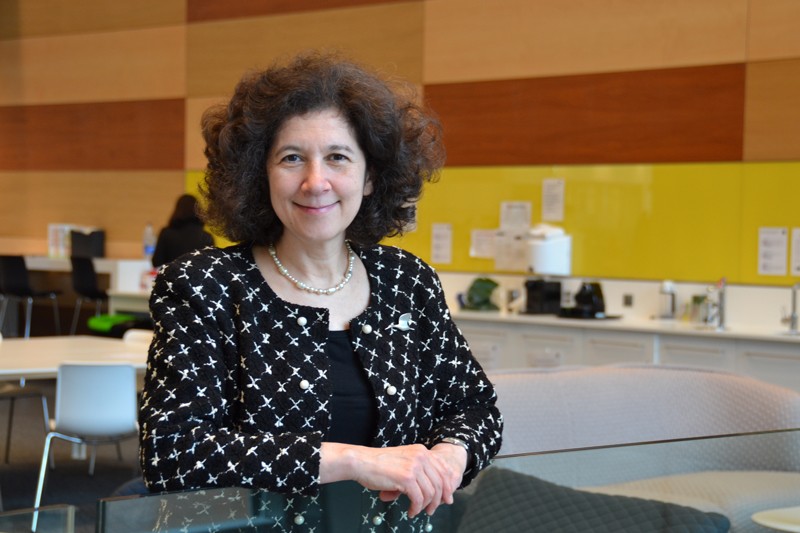A successful entrepreneur has to pull things together and influence people. They need to be able to raise money, be good at presenting ideas and building trust, and know how to lead and inspire a team. In my part-time role as entrepreneur in residence at the Francis Crick Institute in London, I mentor scientists taking their first steps towards the intersection between research and industry.
Scientists’ exposure to entrepreneurship has improved over the past 20 years. The United Kingdom is leading the rest of Europe in this activity, but still lags significantly behind the United States, where entrepreneurship is ‘in the water’ at many academic institutions, and the assumption is that an academic will typically be involved in at least one start-up company. At the Crick, the translational curriculum supports PhD students and postdoctoral researchers to develop their science in a way that can lead to real-world impact.
From academia to business
I’m a chemist by training, and often consider it ironic that I left the bench after my PhD in penicillin biosynthesis at the University of Oxford, UK, because I wanted to work in an environment with a faster feedback loop and more interaction with people. In business development, you need an enormous degree of patience because the time scales are long, and you have to build relationships. You will have many conversations that don’t lead to anything, but you can rarely tell immediately which ones are the most promising.
Whenever I’m asked what it takes to a build a successful company, I list the following four key pillars.
Market need. Does your idea fulfil a market need, and how have you tested that need? Scientists are often so in love with their technology that they neglect to see how it will work in the real world, or who will be prepared to pay for it. Talk to potential users about your technology’s impact and get customer feedback early.
Technology. How can you protect your idea? If you can’t protect it, nobody will invest. And how can you most easily and cheaply demonstrate a working ‘proof of concept’?
People. For investors, your team is at least as important as your technology. Scientists who want to be the chief executive and don’t listen well to input from others have a high risk of failure. Relationships can be very intense in a small company: frictions develop and there is nowhere to hide. Everyone needs to find their personal style, but good leadership is crucial as a chief executive.
Finance. Generally, if you get the first three things right, you should be able to raise money. However, fundraising is always tough for early-stage companies, and you need to understand not only grants but also the various kinds of investment, ranging from venture capital to angel investors (people who invest their own money in early-stage companies). Funding is particularly challenging during the COVID-19 pandemic. Many investors are focusing on their existing portfolio of companies, which might need unknown amounts of cash, so the ‘bar’ for any new investment is set even higher than usual.
Building your network
After my PhD, I worked in international marketing for 11 years in the agrochemical division of ICI (now part of Syngenta). I then undertook a Sloan master’s degree in leadership and strategy at the London Business School, where I discovered the world of entrepreneurship. I really wanted to use my scientific background and my commercial experience to do something entrepreneurial, so it all came together for me to go into biotechnology. Since then, I have worked at a series of biotech companies as commercial director, chief business officer, chief executive or chair, and in other, non-executive roles. I’m also involved in investment: I am a member of the University of Cambridge Seed Funds investment committee where I see exciting emerging start-ups, and I chair the investment committee for the LifeArc Seed Fund in London, which invests in early stage-biomedical start-ups.
The biotech community is close-knit, and we’re lucky because there are decent, generous people who are often prepared to give a lot of free mentoring time and advice to someone who is just starting out. I have invested a lot of time building up my networks — this is worth doing because it generally means that if you don’t know the answer to something, you know someone who does.
The ‘proximity model’
Researchers at the Crick work alongside scientists from big or small enterprises. The Crick has developed an innovative ‘proximity model’ for working with pharmaceutical multinationals such as GlaxoSmithKline, AstraZeneca and Merck & Co, which contributes to skills development, including experience of working in industry as well as innovation leading to publications.
Knockbacks and resilience
To be a successful entrepreneur, you need resilience and persistence. You get kicked in the teeth and rejected time and time again. That’s why I prefer to talk about ‘knockbacks’ rather than ‘failure’, which sounds too terminal. You can allow yourself 20 minutes to wallow and then you have to pick yourself up and think of new ways forward. You also need to listen well to feedback and to remain permanently open minded!
Running a company isn’t for everyone. Sometimes scientists have great ideas, but don’t have the right personal profile — or perhaps the desire — to take the technology forward themselves.
It’s absolutely fine to remain in academia and get other people to run the business. You can still stay involved by being on the scientific advisory board, working in a consultancy role and getting some founders’ shares. But if you do decide to try your hand at entrepreneurship, you need to fasten your seatbelt for a rollercoaster ride. You can be sure you will never have a boring day in the office!
"four" - Google News
July 13, 2020 at 07:18PM
https://ift.tt/38YUQO0
The four pillars of a successful science spin-off company - Nature.com
"four" - Google News
https://ift.tt/2ZSDCx7
https://ift.tt/3fdGID3


No comments:
Post a Comment